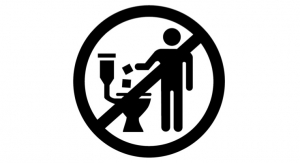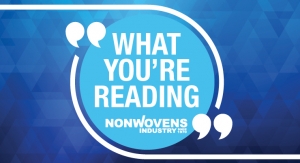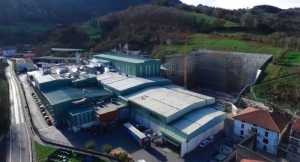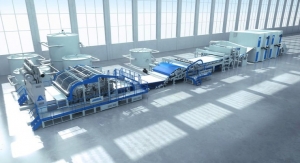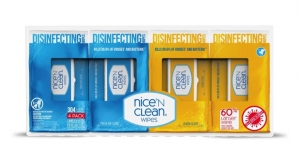Karen McIntyre, editor02.16.17
Earlier this month, EDANA, the international association of nonwovens and related industries, announced an updated code of practice for the disposal and labelling of personal care and cleaning wipes. These efforts aim to better educate consumers on which products can and cannot be safely flushed down the toilet.,Compared to the earlier version, launched in 2013, , this new Code includes new requirements, e.g. moving the “Do Not Flush” (DNF) symbol to the front of packs for wipes most at risk of being mistakenly flushed, requiring that secondary packages have a DNF symbol and that all baby wipes‑ carry the DNF symbol. The code also ups the size and contrast requirements of the logo to make it more readable.
“We understand that providing clear information for the consumer to easily differentiate between flushable and non-flushable wipes is essential,” says Pierre Wiertz, general manager of EDANA. “Baby wipes are an example of a product category that provides the largest area of consumer confusion for proper disposal. By launching this new Code of Practice, the wipes industry wants to help all wipes users dispose of their products in the right way.”
These efforts mirror similar efforts underway in North America that are expected to be publicized in coming months. The U.S. market has faced considerable challenges, including lawsuits and potential legislation banning the sale of flushable wipes in some cities, while in Europe the controversy is not as widespread.
“In Europe there is growing level of awareness around flushable wipes and wastewater stakeholders are keen on addressing this. We are cooperating with various stakeholders in Belgium, the Netherlands, Spain and the UK, says Pierre Conrath, EDANA’s external relations and sustainability director.
Conrath says the increasing attention around wipes in general and recent calls for bans on flushable wipes could have an impact on industry, as it creates an environment in which flushability claims are systematically challenged. “Companies are taking stock of these developments and have quite understandably delayed or even cancelled projects in this field. ”
This situation is in stark contrast to the U.S., where investment in flushable substrate technology has been seen a viable growth strategy for many companies already involved in the wipes market.
“Industry efforts on labelling are starting to pay off, consumers have noticed the DNF symbol, they are asking questions and will hopefully change their habits," Conrath says. "That is our key objective. In parallel we are working with waste water organisations to develop a new set of flushability tests that are recognized and accepted by all. We hope work on an ISO standard on flushability will resume soon."
“We understand that providing clear information for the consumer to easily differentiate between flushable and non-flushable wipes is essential,” says Pierre Wiertz, general manager of EDANA. “Baby wipes are an example of a product category that provides the largest area of consumer confusion for proper disposal. By launching this new Code of Practice, the wipes industry wants to help all wipes users dispose of their products in the right way.”
These efforts mirror similar efforts underway in North America that are expected to be publicized in coming months. The U.S. market has faced considerable challenges, including lawsuits and potential legislation banning the sale of flushable wipes in some cities, while in Europe the controversy is not as widespread.
“In Europe there is growing level of awareness around flushable wipes and wastewater stakeholders are keen on addressing this. We are cooperating with various stakeholders in Belgium, the Netherlands, Spain and the UK, says Pierre Conrath, EDANA’s external relations and sustainability director.
Conrath says the increasing attention around wipes in general and recent calls for bans on flushable wipes could have an impact on industry, as it creates an environment in which flushability claims are systematically challenged. “Companies are taking stock of these developments and have quite understandably delayed or even cancelled projects in this field. ”
This situation is in stark contrast to the U.S., where investment in flushable substrate technology has been seen a viable growth strategy for many companies already involved in the wipes market.
“Industry efforts on labelling are starting to pay off, consumers have noticed the DNF symbol, they are asking questions and will hopefully change their habits," Conrath says. "That is our key objective. In parallel we are working with waste water organisations to develop a new set of flushability tests that are recognized and accepted by all. We hope work on an ISO standard on flushability will resume soon."



